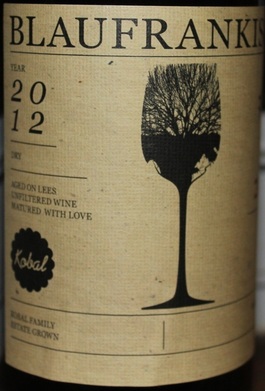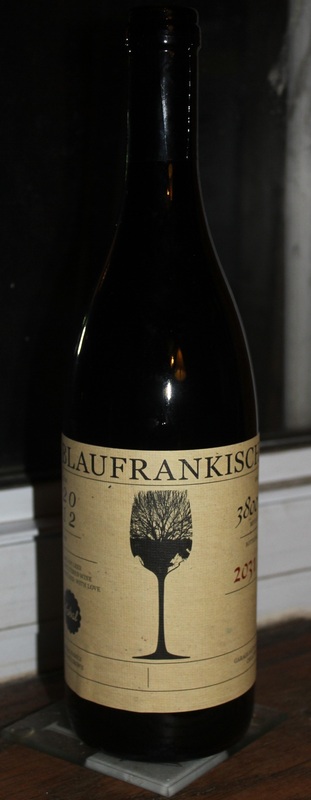
Blaufrankisch isn’t the most widely known grape in the USA but it is widely grown in Central Europe. It is a bit surprising that it isn’t more popular given that it is an accessible wine taste-wise. The grape is also called Lemberger, Frankovia, Kékfrankos and other names.
I had not one but two bottles of this Blaufrankisch from the Kobal Family Estate in Slovenia (Just shy of 10 percent of Slovakia’s vineyards are planted with this grape). It is a great buy at around $20 a bottle (sometimes a bit less). There are only 3800 bottles of this wine available.
After drinking the wine I read various tasting notes for this particular wine that I felt were a tad wrong. They had this wine as being a sort of “Bordeaux light.” That part of it was, to me, off. This is a lighter wine with, as mentioned, tannins but was otherwise not a wine with the same complexity of good Bordeaux; this is not an insult. It is a wine more than worth a taste and with a different sort of complexity than a Bordeaux blend.
Several notes also said it was “peppery,” one of those imprecise terms that pervade discussion amongst wine experts. To some it means literally the kinds of pepper we all think of: black, white, chili. It is accurate to call this wine peppery, even if the term is a little imprecise. It is a bit less obvious than when you read fruit comparisons to say the least. We won’t even get into “leathery.”
The tasting notes I saw noted various dark fruit tastes—perhaps more accurately but I sit here reading notes while drinking wine? And I am, it is a wine where the fruit is definitely more blackberry than cherry. But any fruit here is subtle and underneath the tannins (more on tannins in a second).
The reason I bring up tasting notes is that, when you look up wines you will often see these. When I disagree with the ones I see it may well be the equivalent of a movie fan disagreeing with a seasoned movie critic over the relative merits of Citizen Kane (or Paul Blart Mall Cop 2, as the case may be). What this means to you, as a wine consumer, is that you should find specific wine reviewers whose views jibe with your tastes.
The second time it seemed to be tannic than the second time. It probably wasn’t—it just seemed that way. There are a lot of reasons why a why the same wine might taste different when you crack open a new bottle. What you are eating can be a big part of this or if you are not eating at all can make a wine taste different. This is why some wines go with one type of cheese and some with another. It is why some wines go with a pork chop and others go with chicken cacciatore.
But that is a side note!
The best way to describe tannins in wine is that they give the wine a certain bitterness and astringency. But what does that actually mean? Think of a raw fruit like a pomegranate—it has a slightly astringent taste. You don’t really “taste” tannins rather you feel them—they leave certain bitterness in their wake. Tannins come from a variety of chemicals. I’d love to tell you about all the possible chemicals but I have no idea what they all are. The tannins found, naturally in grapes are called proantocyanidins and you can find out more about them HERE.
Tannins also react with oxygen—when this wine sits in your glass awhile (or any wine really)—it changes with contact to the air. This is why you see wine decanted (put into a different container from the bottle and allowed contact with air). These days you also see aerators that you pour your wine through to give it contact with air and “soften” tannins. To me? I sort of like to taste the wine change. I like to pour it into a glass and taste it thinking; “wow this is pretty tannic.” Then I periodically taste it as it changes with contact to the air. This is just me and you do not have to be me but there is something else to consider; if you decide to decant a wine how long should you leave it before you drink? If you let it sit too long? It is sort of like those beautiful roses you sent/received for Valentine’s Day…but on March 8th.
When you see this Blaufrankisch? Do not be afraid! At first taste you may think it is too acidic but that is the tannins; swirl your glass around and give it a minute. You will not be disappointed.

 RSS Feed
RSS Feed